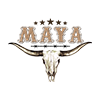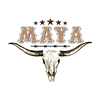DTF Transfers Pricing & Profit Margins: A Practical Guide for Custom Apparel Entrepreneurs (UV DTF, Blank T‑Shirts, Hoodies, Hats & Dropshipping)
Introduction: Pricing that powers growth
Running a profitable custom apparel business in 2025 means mastering both creative design and cold, hard numbers. DTF transfers and UV DTF open opportunities for photorealistic prints, low minimums, and on-demand workflows—which is great for Etsy sellers, Shopify brands, and entrepreneurs selling through social channels. But if you don’t price right, customer demand won’t translate to profit.
This practical guide walks you through cost accounting, pricing formulas, channel strategies, and real-world tactics—plus how to leverage MAYA TX services like same-day pickup in Austin, nationwide shipping, dropshipping fulfillment, and our wide selection of blank apparel.
Who this guide is for
- New entrepreneurs learning pricing fundamentals for DTF transfers and UV DTF.
- Small apparel brands and Etsy/Shopify sellers optimizing margins.
- Print-on-demand and dropshipping sellers evaluating fulfillment partners.
- Experienced shop owners scaling production who need actionable cost-control tips.
SEO keywords covered
- DTF transfers
- UV DTF
- custom apparel
- blank t‑shirts
- hoodies
- hats
- embroidery
- print-on-demand
- dropshipping
Pricing fundamentals: the Cost Per Sale formula
Everything starts with accurate cost accounting. Use this core formula every time you price a product:
Cost Per Sale = Material Cost + Production Labor + Equipment Amortization + Packaging & Shipping + Marketplace & Payment Fees + Returns Reserve + Marketing Attribution
Breakdown for DTF/UV DTF items:
- Material Cost = Transfer cost (ink, film/transfer) + Blank apparel cost
- Production Labor = operator time to press/apply + finishing
- Equipment Amortization = proportion of printer/press cost per order
- Packaging & Shipping = mailer, polybag, postage or pass-through shipping fee
- Marketplace & Payment Fees = Etsy/Shopify/Stripe/PayPal percentages and fixed fees
- Returns Reserve = estimated cost of returns/replacements
- Marketing Attribution = portion of CAC allocated to each sale (ads, influencers)
Detailed examples with real numbers
Example numbers below are illustrative. Replace with your supplier and labor costs.
Low-ticket tee (DTF transfer)
- DTF transfer cost: $2.00
- Blank t‑shirt: $4.00
- Labor & press amortization: $1.00
- Packaging & shipping materials: $0.75
- Marketplace & payment fees: $1.25
- Returns reserve: $0.50
- Marketing attribution (ads per sale): $1.50
Total cost per tee = $11.00
If your target gross margin is 50%, price = $11.00 / (1 - 0.50) = $22.00. For a keystone markup (2x), price = $22.00. If you want a 60% margin, price = $11.00 / (1 - 0.60) = $27.50.
Premium hoodie (UV DTF)
- UV DTF transfer: $4.50
- Blank hoodie: $13.00
- Labor & press amortization: $1.75
- Packaging & shipping materials: $1.25
- Marketplace & payment fees: $2.50
- Returns reserve: $1.00
- Marketing attribution: $2.50
Total cost per hoodie = $26.50
At a 55% margin, price = $26.50 / (1 - 0.55) = $58.89. Many brands price premium hoodies $49.99–$79.99 depending on niche and perceived value.
Hat with DTF patch
- DTF patch/transfer: $1.75
- Blank hat: $6.50
- Labor & finishing: $0.75
- Packaging & fees: $1.25
- Marketing attribution: $1.25
Total cost per hat = $11.50
Target price range often $24.99–$34.99 to hit healthy margins.
Scaling economics: how volume changes your unit cost
Volume reduces cost in several ways:
- Blank price tiers from suppliers reduce per-unit cost dramatically.
- Bulk ink and film purchases lower transfer costs.
- Improved labor efficiency reduces time per item.
- Shipping discounts and consolidated fulfillment lower per-order postage.
Example: If you negotiate blanks from $4.00 to $3.00 at 250 units/month, tee cost drops and pricing flexibility increases. Track unit economics at multiple volumes (1–50, 51–250, 251–1,000+) to set tiered pricing and wholesale quotes.
DTF transfers vs screen printing vs embroidery — strategic guidance
- DTF transfers: Best for small batches, full-color artwork, print-on-demand, and fast product testing. Setup costs low; per-item cost moderate.
- UV DTF: Superior for high-detail prints on dark fabrics and premium finishes. Slightly higher per-transfer cost but higher perceived product value.
- Screen printing: Most cost-effective for large runs with simple spot colors. Setup (screens) creates higher minimums but excellent margin at scale.
- Embroidery: Premium tactile finish for hats, polos, and merch. High digitization and stitch costs but commands price premiums and perceived longevity.
Use DTF/UV DTF when agility and color fidelity matter. Choose screen printing for big runs and embroidery when a premium finish is essential.
Channel pricing: Etsy, Shopify, wholesale, and marketplaces
Different channels carry different fee structures and buyer expectations:
- Etsy: Higher marketplace fees and discovery advantages for handmade/indie items. Customers expect unique designs—price accordingly and bake fees into product price.
- Shopify: Lower platform fees but you must drive traffic. You can afford lower product prices if your funnel and retention are strong.
- Wholesale: Expect deep discounts (30–50%) off retail. Make sure margin after wholesale pricing still covers production and marketing.
- Amazon/Third-party marketplaces: High fulfillment and advertising costs; use selectively for specific SKUs that scale.
Print-on-demand and dropshipping: financial and operational impacts
Dropshipping and POD remove inventory risk, but fulfillment per-order costs are higher. If you partner with a fulfillment provider like MAYA TX, incorporate their fees into Cost Per Sale.
- Benefits: zero inventory, rapid catalog expansion, professional fulfillment (we print and ship for your customers).
- Trade-offs: slightly higher per-unit cost, longer lead times if not managed, and potential brand control issues.
Tip: Price POD/dropship items with an explicit margin buffer (10–20%) to account for higher variability in fulfillment fees and returns.
Marketing, CAC, and how pricing intersects with customer acquisition
Your product price must support customer acquisition costs (CAC). If your cost per sale is $20 and your CAC is $10, then lifetime value (LTV) or repeat purchase behavior must justify that acquisition. Typical approaches include:
- Raise average order value with bundles, upsells, and cross-sells.
- Use free shipping thresholds to increase order size.
- Retargeting and email flows to increase LTV and reduce effective CAC over time.
Example: With a $22 tee, $11 COGS and $9 CAC, your gross contribution is $2 before overhead—thin. Increase AOV to $45 by bundling a tee and sticker; CAC per order stays similar but contribution improves.
Profitability metrics and worksheets
- Gross Margin = (Price - COGS) / Price
- Contribution Margin = Price - Variable Costs (COGS + per-sale marketing)
- Breakeven Units = Fixed Costs / Contribution Margin
- Profit Per Production Hour = Total Contribution / Hours of Production
Track these monthly. For example, if your fixed monthly costs are $2,000 and contribution per hoodie is $20, you need 100 hoodies sold to break even.
Quality control and returns management
- Run a preflight checklist: color proof, test press settings, and wash tests for DTF/UV DTF transfers.
- Document press parameters per blank type and transfer style to reduce defects.
- Offer clear wash/care instructions to customers to minimize returns.
- Set a returns reserve (1–5% of revenue) to smooth financials and preserve margin.
Sustainability and premium positioning
Sustainable blanks and recycled packaging let you charge premiums. Customers often pay 10–30% more for organic or ethically-sourced blanks, which can offset higher COGS and boost margins if marketed effectively.
Legal, taxes, and operational notes
- Keep reseller certificates and sales tax collection in mind when buying blanks or selling across states.
- Trademark and copyright: avoid pirated art—licensing costs must be added to COGS if applicable.
- Set up proper terms for dropshipping partners covering returns, defective items, and SLAs.
Integration and fulfillment checklist for dropshipping with MAYA TX
- Create SKUs and product templates mapping designs to blanks.
- Connect your Shopify/Etsy store to fulfillment via available APIs or order portals.
- Set shipping profiles and real-time shipping options if supported.
- Test a small batch or single order to validate print quality, packaging, and delivery time.
- Scale and monitor KPIs: order accuracy, fulfillment time, refund rate, and NPS.
MAYA TX highlights: same-day pickup in Austin, nationwide shipping, and we print and ship for your customers as a dropship supplier. Explore our offerings: DTF Transfers, UV DTF, and Blank Apparel.
Pricing tactics that boost perceived value
- Use premium mockups and lifestyle photos to justify higher prices.
- Offer limited runs and numbered editions to create scarcity.
- Bundle with add-ons like stickers, patches, or complementary accessories.
- Offer tiered shipping: standard vs expedited—and charge appropriately.
Case study: From side hustle to consistent $10k/month revenue
Scenario: Etsy shop selling 300 tees/month at $25 each.
- COGS per tee: $11 (transfer + blank + labor + packaging)
- Marketplace & payment fees per tee: $1.50
- Marketing per tee: $3.00
Total cost per tee = $16.50. Gross profit per tee = $25 - $16.50 = $8.50. Monthly gross profit at 300 units = $2,550. To reach $10k/month take-home you need to increase price, reduce costs (negotiate blanks to $3.50), increase AOV with bundles, or cut CAC with organic channels. Combining a $27 price, $3.50 blank, and a $5 bundle upsell doubled contribution to reach sustainable growth.
Templates and quick calculators
Use this quick pricing template:
- Transfer cost = $_____
- Blank cost = $_____
- Labor & amortization = $_____
- Packaging and shipping = $_____
- Fees & returns reserve = $_____
- Marketing per sale = $_____
- Total cost = sum of above
- Target margin = ____% → Price = Total cost / (1 - margin)
Resources and further reading
Industry guides and platforms to broaden your knowledge:
- Printful — print-on-demand platform for benchmarking POD pricing models.
- Shopify Blog — e‑commerce, pricing psychology and growth tactics.
- Oberlo — dropshipping and product research insights.
FAQ — common pricing questions
- Q: Should I use keystone pricing? A: Keystone (2x cost) is a simple baseline, but real pricing must factor channel fees and CAC. Use keystone as a starting point and refine by margin targets.
- Q: How much should I budget for marketing? A: New brands often budget 10–30% of revenue on marketing until organic channels scale. Track CAC and LTV closely.
- Q: When is embroidery better than DTF? A: For hats, polos, and elevated brand pieces where tactile, durable branding is prioritized. Embroidery commands higher prices and margins.
Final checklist before you publish a product
- All costs calculated and margin target verified
- High-quality mockups and real photos uploaded
- Shipping profiles and fulfillment partner settings configured
- Returns policy and care instructions ready
- Marketing plan and budget set for launch
Call to action — start pricing smarter and scale with MAYA TX
If you want reliable fulfillment and partner support as you scale, MAYA TX offers same-day pickup in Austin, nationwide shipping, dropshipping fulfillment (we print and ship for your customers), and a broad selection of blank apparel. Start with a test order or request a quote for bulk pricing and dropshipping integration. Visit our product pages and get started:
Questions about quoting, bulk discounts, or Shopify/Etsy integration? Contact MAYA TX support to get a custom quote and start a test run. With the right pricing, processes, and a reliable fulfillment partner, you can build a scalable, profitable custom apparel business in 2025 and beyond.
About MAYA TX
MAYA TX specializes in DTF transfers, UV DTF printing, and fulfillment services tailored to entrepreneurs and small brands. We combine fast turnaround, flexible fulfillment options, and a wide blank apparel catalog to help you focus on design and growth while we manage production and shipping.


















